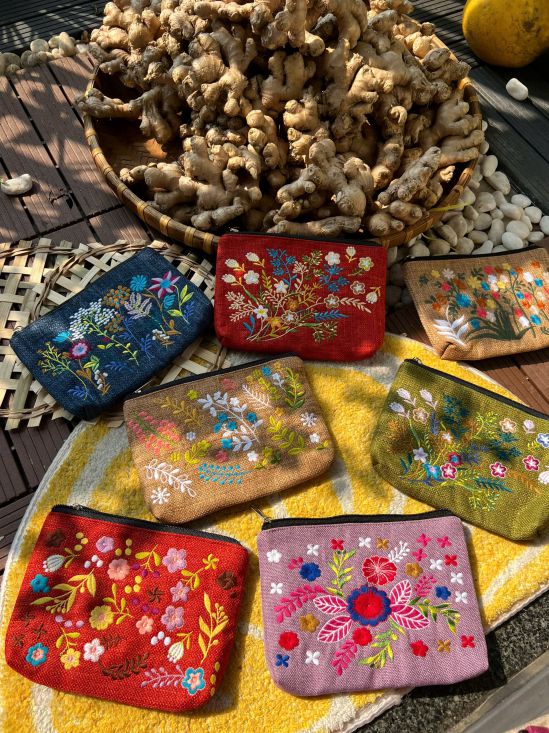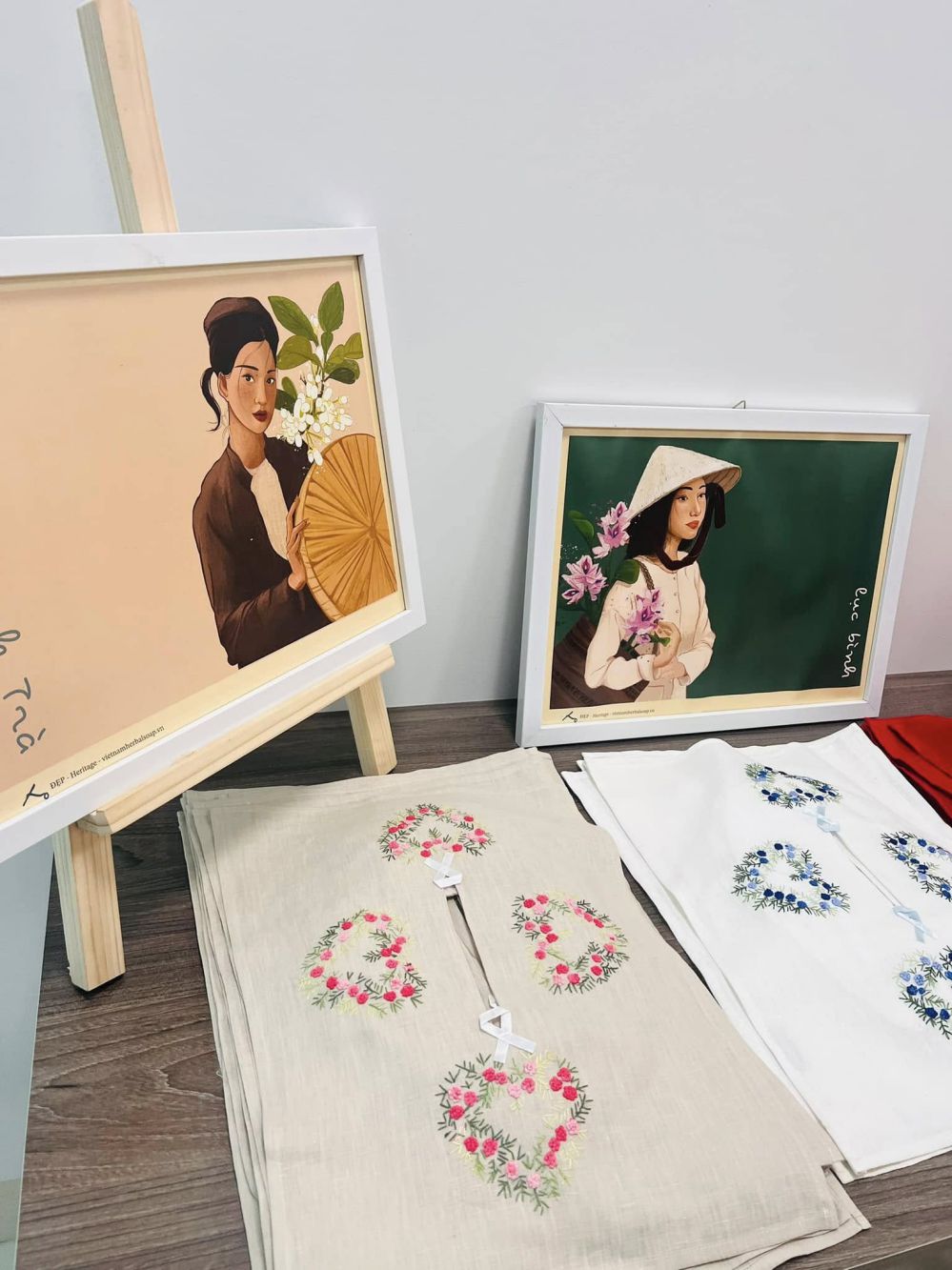At one time, Thanh Ha was known as the "capital of lace embroidery" in the North. Since the early 20th century, the village's products have been present throughout the plains, following traders to Hanoi and Hai Phong. Each scarves, tablecloth or curtain contains the sophistication of the hands of craftsmen, the meticulousness of women sitting for hours on the white fabric frame. Some people say that just by looking at one end, one can immediately know that Thanh Ha craftsman is as easy and light as the wind.
However, as the integration period passed, those bustling sounds gradually decreased. When the factory grew right next to the bamboo pile of the village, young people chose to listen to the sound of industrial machines instead of the quiet sound of embroidery. The old wooden frames covered with dust, the only unfinished threads as evidence of a prosperous period have now retreated into the past.
In many houses, people still keep some old embroidery pieces carefully folded in wooden boxes as if to retain some of the memories. Every time it is opened, the smell of old fabric blends with the smell of time, making people's hearts burst out because it is not only a product, but a part of the soul of the craft village.
The fading of Thanh Ha lace embroidery does not come from forgetfulness but from the cycle of modern life. When the value of manual labor is not enough to support the family, when the market favours fast, cheap and simultaneous products, the meticulous stings gradually lose their position. However, in that gloomy picture, there are still small lights, those who do not accept that their father's profession is only in memories. One of them is Ms. Nguyen Thi Mai Huong, who is trying to "encrust" her dreams with her own hands.

Young people go back to the traditional profession to keep their profession
Ms. Huong's chance to work was a coincidence. "I was not born into a family of embroiderers, but when I got married and returned to Thanh Ha, I saw everyone clinging to the fabric frame, so I started studying. The more it works, the more passionate I am" - Ms. Huong said.
women's embroidery requires meticulousness down to every detail. From fabric cutting, embroidery, lace, laundry, to conditioning and packaging, everything is done by hand. Traditional products such as tablecloths or hand-embroidered knee chains may take a whole month to complete.
"The soul of the profession lies in the embroidery and hand-carving stages. This stage requires skill, sophistication and creativity in the hands of craftsmen, said Ms. Huong.
Initially, she only took a few photos of the product and posted them on social media to introduce them. Unexpectedly, the photos of the white lace tablecloth and the delicately embroidered flower pillow are especially loved by domestic and foreign customers. However, to make a living with the profession, it is not just love. Low labor prices and unstable output have caused many workers to leave to work as workers.

Since then, she has begun to expand the scale of her small workshop, combining e-commerce channels and social networking platforms to promote products. Her new, youthful way of making but still respecting the traditional spirit has helped her brand "Thuong Minh Khang" gain its own position. Not only receiving manual export orders to Japan, she also cooperated with a number of tourist gift shops in Hoi An, Ha Long, and Sa Pa to bring the product closer to tourists.
international customers love handmade goods, even though the price is several times higher than that of the factory. They say that looking at the product makes you feel the hands and souls of Vietnamese craftsmen" - Ms. Huong shared.
Not only stopping at production, Ms. Huong also actively participates in fairs and handicraft cultural events in Hanoi, Nam Dinh, and Da Nang to promote the lace embroidery profession.
Every time she brings a product to introduce, she feels proud to hear a customer exclaim: "How sophisticated is hand-embroidered?".
Now, besides traditional roads, Ms. Huong also cherishes the plan to open an experience tourism workshop where visitors can try embroidering, listening to craft village stories and bringing handmade gifts created by themselves.
Ms. Nguyen Thi Mai Huong's story is not just about keeping a job but a way to preserve the memories of her hometown. In the industrial era, people like her are weaving the "throat" of the new era, where each needle becomes a link connecting the past with the future.











